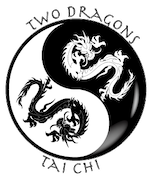We'll try to answer some of the more common questions about Tai Chi and Qigong below:
What is Tai Chi?
Tai Chi is an ancient Chinese tradition that, today, is practiced as a graceful form of exercise. It involves a series of movements performed in a slow, focused manner accompanied by deep breathing.
Tai Chi, also called Tai Chi Chuan, is a noncompetitive, self-paced system of gentle physical exercise and stretching. Each posture flows into the next without pause, ensuring that your body is in constant motion.
Tai Chi is different from Yoga, another type of meditative movement. Yoga includes various physical postures and breathing techniques, along with meditation.
What is Qigong
Qigong (pronounced chee-gong) is an ancient Chinese exercise and healing technique that involves meditation, controlled breathing and movement exercises.
The character "Qi" that makes up the first part of Qigong is a difficult word to translate, according to Peter Wayne, an assistant professor of medicine at Harvard Medical School and the research director at Harvard's Osher Center for Integrative Medicine. Qi is a concept from traditional Chinese culture that roughly means vital energy, information, breath or spirit. The second character in Qigong, "gong," means cultivation or mastery, Wayne said. Qigong is therefore sometimes translated as "vital energy cultivation" or "mastery of your energy."
There are many forms of Qigong practiced throughout the world. Some of these forms involve breathing and meditation to promote spirituality and health while others are more vigorous and include martial arts exercises. Tai Chi, a widely practiced mind-body exercise, is sometimes referred to as a form of Qigong because it "cultivates, moves and helps manage Qi," according to Wayne.
What is difference between Tai Chi and Qigong?
While they share many characteristics, most people consider Qigong and Tai Chi to be two distinct practices.
The chi in the word 'Tai Chi' is a different character and has a different meaning [than the 'qi' in Qigong]. But the practice of Tai Chi, in my opinion, is equivalent to a form of Qigong. You're training to have more awareness and control over your 'life force' — your physiology or energy. And some forms of Qigong are almost indistinguishable from Tai Chi.
There are other forms of Qigong that look quite different from Tai Chi, however. These involve simple, slow movements done repeatedly. One of the most basic forms of Qigong is Ba Duan Jin Qigong, which has eight movements, often called the Eight Pieces of Brocade, or Fabric. (Translations vary.) This exercise dates back to the Song Dynasty. It is meant to enhance limb strength and flexibility of the joints.
While the movements of Qigong may be different from those of Tai Chi in some cases, both practices incorporate strength and flexibility with breathing exercises, focused attention and imagery. The biggest difference between Qigong and Tai Chi has more to do with the public's perception of these mind-body practices than it does with the practices themselves.
Will Tai Chi help me to improve my balance?
There are multiple studies that show practitioners of Tai Chi have improved balance. A major study done by the NIH showed significant improvement in balance, 47.5% less falls, and found it superior to other exercises.
Here's an article from the New England Journal of Medicine that discusses Tai Chi and Postural Stability in Patients with Parkinson's Disease.
And here's another from The Gerontological Society of America:
